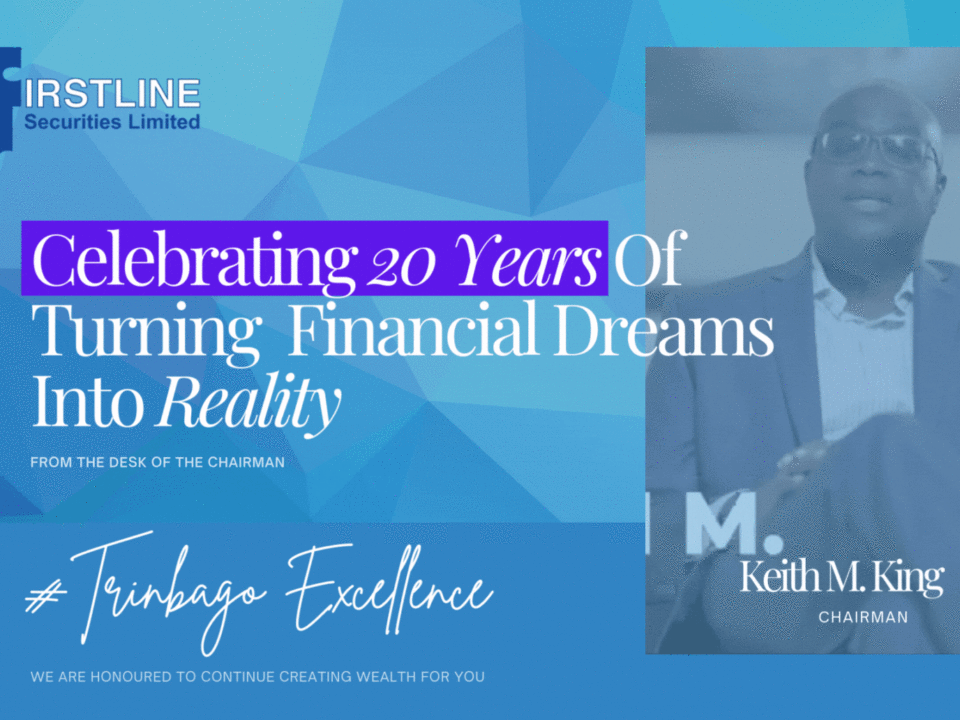A Firstline Securities Limited Blog by: Mike
Introduction
In the first of a two-part series we look at the concepts of risk and return and the relationship between them.
What is Risk?
Risk and return are interlinked, and so it is not surprising that in most financial textbooks the definition of risk is directly associated to the expected return on an investment.
For the purposes of this blog entry we could define risk as follows:
The risk of an investment is the risk that the actual return we receive on that investment will be different to the return that we expected. While there are different sub-sets of risk the common factor between most of those sub-sets is that they are all measured by calculating the standard deviation of the expected return on the investment. A high standard deviation indicates a high degree of risk.
We will explain this further down in this blog entry by a worked example.
What is return?
The return on an investment is the gain or loss on that investment over a defined period. The Gain or loss on the investment usually comprises of two elements. Income received on the investment and a capital gain or capital loss on the capital value of the investment.
When an investor is considering whether to make an investment that investor usually anticipates or expects a certain level of return on that investment. If the investor makes the investment the risk the investor implicitly accepts is that the return the investor receives may not match the expected return.
The fundamental link between Risk and Return – Perception is Everything
The link between risk and return is one of the fundamental cornerstones of Financial Theory.
The greater the amount of risk an investor is willing to take, the greater the potential return. This is just another way of saying that investors need to be compensated for taking on additional risk.
Consider the following. A government bond – a US Treasury Bond is a good example (or GOTT bond if in TTD) – is considered a safer, less risky investment than a company bond. Accordingly, because the risk of investing in a corporate bond is higher than the risk of investing in a government bond, investors will require a higher expected rate of return to induce them to invest in the corporate bond rather than the government bond. The extra inducement is required because the investor perceives the corporate bond to be more “risky” than the government bond.
Taking this a step further – are there any Risk-Free Investments?
The short answer is that all investments carry a degree of risk. However, some investments are close to being considered risk-free.
In the United States, an example of a risk-free investment would be United States Treasury Bills. These are securities that are backed by the “full faith and credit” of the United States Government. It is the return on United States Treasury bills, bonds and notes that are often used as a measure of the risk-free rate and yield curve in the United States.
Risk-Free Return
The risk-free return is the return required by an investor to compensate that investor for investing in a risk-free investment. The risk-free return compensates investors for the effect of inflation, and for foregoing consumption (because the investor is making an investment he cannot use the funds invested for general consumption purposes such as buying a new car or going on a luxury holiday). As we have noted above, the return on treasury bills is often used as a measure of the risk-free rate in the United States.
The Risk Premium
Following on from the definition provided above, risk simply implies that the future actual returns received on an investment may vary from the returns that the investor originally expected. If an investor undertakes a risky investment, then that investor will require a return that is greater than the risk-free rate to compensate them for the additional risk they incur on that risky investment. The riskier the investment, the greater the compensation the investor will require.
The difference between the return the investor expects, and the risk-free return is referred to as the risk premium.
A Worked Example
Bob currently has all his savings deposited in a Bank current account earning no interest. He is considering buying shares in a company quoted on the Trinidad and Tobago Stock Exchange and is trying to determine whether the shares are a viable investment. Each share will cost TT$100 and are expected to pay a dividend of TT$5 in the year. At the end of the year Bob’s stock brokers expect each share to be worth TT$117.
In considering making the investment Bob should consider:
- The expected return on the shares.
- What risk premium he requires to compensate him for undertaking a risky investment.
The Expected Return on the Shares
The return on an investment in shares comes in the form of dividends received and capital gains (or losses) on the market value of the share.
Annually we could express this expected return with the following formula:
Annual Expected Return on a share =

Key:
D1 = Dividend per share.
P1 = Share price at the end of the year.
P0 = Share price at the start of the year.
Annual Expected Return on a share =

Annual Expected Return = 22%
In Bob’s case, we can see that his expected annual return comprises of a dividend yield of 5% and a capital gain of 17%. In a real-world situation Bob doesn’t know what dividend will be paid in the year, or what the share price will be in one years-time. This is the risk Bob faces. The returns he expects to receive may not match reality.
We will pick-up on this risk in the second of our series of blog entries.
Closing thoughts – a time to chill and a time to invest?
Firstline Securities Limited offers comprehensive coverage of local and international markets with a bias for the energy sector. Firstline offers many unique opportunities to put surplus cash to work either as your asset manager or investment advisor. Please contact us for more details at info@firstlinesecurities.com or at 868.628.1175, we can discuss your investment needs in detail and craft a portfolio that makes sense for you. We look forward to hearing from you.




